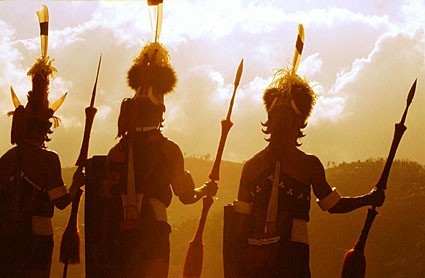Naga
Thirty ethnic groups of Tibeto-Burmese origin – the Naga – inhabit the remote region of Northeast-India which stretches to Upper Burma. It was restricted to all foreign access for 65 years and is therefore perceived as “Asias last great mystery”. During hundreds of years in seclusion the Naga, who were notorious for their headhunting activities, developed extraordinary and unique forms of culture.
It took almost ten years of negotiation before the curators of the exhibition, the Frankfurt based couple Dr. Aglaja Stirn and Peter van Ham, explorers-cum-authors and photographers, were granted special permission to undertake extensive comprehensive fieldwork in the lofty hill regions - the first time since Indian Independence in 1947. They have recently published the first part of their work in the book “The Hidden World of the Naga – Living Tradition in Northeast India and Burma” (Prestel 2003).
In 30 large photographs this first exhibition, focussing on the contemporary cultures of the Naga, creates an impression of their living traditions such as festivals, arts, architecture, crafts and religion. The photos are combined with special artefacts, never exhibited before, from the curators’ private collections, the collections Wittich/Jäger, von Miller and Franzke, and the Museum’s archives.
Music of the Naga, recorded by the curators, introduces the visitors into the unique worlds of sound of the Naga.

